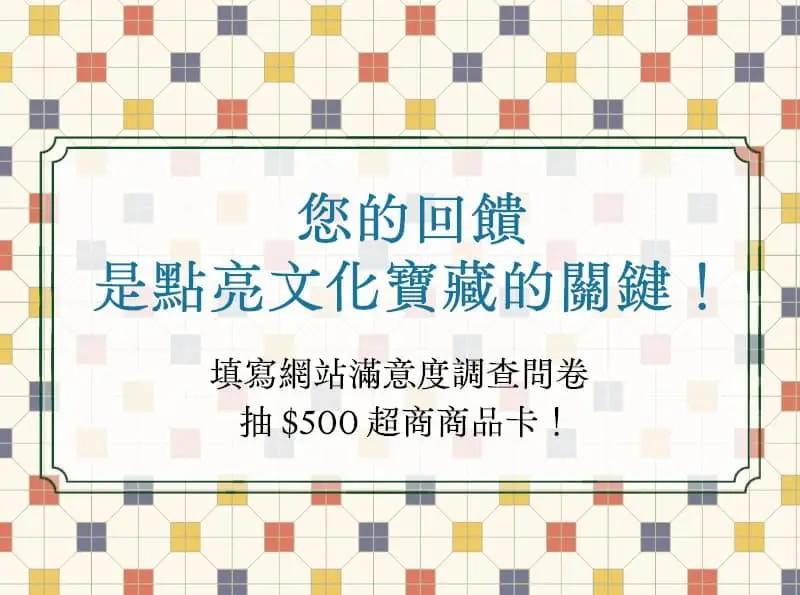首先,老師要求我們先想像一道湯品,母親的雞湯率先跳出。即便我不曾擁有烹調雞湯的經驗,但我仍照著母親曾經告訴我的食譜,在想像中進行了一場料理實驗。薑切開時的嗆味彷彿從回憶中飄出。
接著是一道自選料理。由於前兩天才買了(日式)咖哩,因此香料咖哩浮現在腦中。香料咖哩是我這一生第一次自己煮的料理,當時因為顧慮咖哩塊的熱量、但又有對咖哩的強烈渴望,而自己煮了香料咖哩去填充慾望的缺口。食譜並沒有完全地被腦袋記住,因此是依靠僅存的記憶與推理,將採買物品推出。
記憶總是模糊不清,但在某些時刻又特別清晰。我可以見到廚房人造時的紋理,將洋蔥切開時眼睛的酸澀感(通常我都淚流滿面),蕃茄與刀刃之間柔軟抵抗的觸感。回憶的過程中無法追求百分之百的還原,但卻可以深刻感受到記憶的奧妙:你永遠都不知道,什麼時刻會深深刻在你的心底。
透過一個思想的體驗,學員可以安靜的從記憶中挖掘出那些不知不覺,被刻在心底的回憶、以及當下的感受與經驗如何影響一個人的選擇。當時空靜下來時,感官只剩下獨自一人時,記憶會用力召喚你。
Under the teacher's guidance, the students gradually wandered from the classroom into scenes from their memories. Initially, when the teacher asked us to recall a place for shopping, the first thing that came to mind was the supermarket near the university gate. But then, the scene that appeared wasn’t the dormitory but home. At first, I questioned the logic of this, but then I thought, why not? Both are parts of life, and memories themselves are illogical, more like a collage of images.
The teacher first asked us to imagine a soup. My mother’s chicken soup immediately came to mind. Even though I had never cooked chicken soup before, I followed the recipe my mother had once told me and conducted an imaginary cooking experiment. The sharp scent of ginger being cut seemed to waft from my memories.
Next, we were asked to imagine a dish of our choice. Since I had just bought Japanese curry a couple of days earlier, spiced curry came to mind. Spiced curry was the first dish I ever cooked by myself. At that time, I was concerned about the calories in curry blocks but had a strong craving for curry, so I made spiced curry to satisfy that desire. The recipe wasn’t fully remembered, so I relied on the remnants of my memory and reasoning to figure out the ingredients.
Memories are always blurry yet vividly clear at certain moments. I can see the texture of the artificial countertops in the kitchen, feel the stinging in my eyes from cutting onions (I usually tear up), and the soft resistance between the tomatoes and the knife. While you can’t expect a hundred percent accuracy in recreating memories, you can deeply feel their wonder: you never know what moments will be deeply etched in your heart.
Through this mental exercise, the students could quietly unearth those memories that were unconsciously engraved in their minds and reflect on how their current feelings and experiences influence their choices. When time and space calm down, and the senses are reduced to solitude, memories will strongly call out to you.
-
《島嶼未來料理教室》Future Formosa Culinary Lab Profile Nr.045
16-22歲的彰化縣在均衡飲食與價格之間尋求平衡者,平均花費100元在餐費上。因為「幼時一年一次到王品用餐,慶祝父母的結婚紀念日。結婚一事對我而言並無太大意義,但王品贈與的彈珠迷宮讓我的用餐體驗大為提升」而對飲食記憶留下深刻印象。如果世界末日終將來到,會選擇與男友共享這一餐。關於家庭的一道料理,她提到阿嬤的雞睪丸炒菜芯,鄉下有養雞的人家才會見到的菜色。
"Balanced Eater Seeking Value"
Female(16-22 yrs)/ Changhua County / 100 NTD per meal
Profound dining impressions were shaped by childhood memories of annual meals at Wang Steak to celebrate her parents' wedding anniversary. While the anniversary itself didn’t hold much significance to her, the marble maze gift from the restaurant greatly enhanced her dining experience.
If the end of the world were to come, she would choose to share the meal with her boyfriend.
As for a family dish, she mentioned her grandmother's stir-fried chicken testicles with vegetable stems, a dish typically found in rural households that raise chickens.
-
國立臺灣歷史博物館的第 1 個「公共飲食記憶 NFT 化」實驗計畫《超時空島嶼餐桌》
National Museum of Taiwan History's First NFT Experimental Project on Public Dining Memories《Time-Space Dining Tables》
「國立臺灣歷史博物館」為推動國家文化記憶庫之永續發展,融入當代議題、常民生活及在地關懷,連結博物館專業、數位創新思維與多元社群行動,以促進臺灣原生文化之活化運用,鼓勵全民共同開展記憶庫多元主題與主題素材近用。
本計畫案於112年推出《島嶼庫客 Islands Cooker》飲食記憶系列7支影片,探究臺灣飲食的歷史成因,113年延續「餐桌」的概念,加入「未來」元素,委由畸零地創造股份有限公司辦理《島嶼未來料理教室——NFT設計工作坊》,以記憶庫長期深耕之飲食記憶主題,透過非同質化代幣(Non-Fungible Token,以下簡稱 NFT)設計工作坊,增進記憶庫之內容與應用,落實臺灣原生文化之推廣。
《島嶼未來料理教室——NFT設計工作坊》以「推測設計」為核心,反思記憶料理的獨特性,其之於 NFT的當代意義及其飲食文化價值,並將工作坊延伸設計為「發掘身體飲食記憶,運用想像和推測來創造未來島嶼飲食文化」的參與式體驗活動。工作坊由編舞家與引導師,透過一連串的帶領、想像和對話,挖掘及連結蘊藏身體感知中的飲食記憶,並讓參與者書寫飲食記憶;接著由畸零地工作室與生成式AI 「ChatGPT 4o」協作製作出 「記憶食譜 NFT」及文字翻譯;最後線上場以「圍爐」的概念,讓參與者在雲端上互相分享與交流。
這些飲食記憶透過NFT不可替代、數位交換的特性,被永久保存並流傳,期望每個人都能回首屬於自己的飲食記憶和歷史,經由公共化的途徑與媒介,成為社會記憶的一部份,構築社群認同的可能。
To promote the sustainable development of the Taiwan Cultural Memory Bank, the National Museum of Taiwan History integrates contemporary issues, ordinary life, and local concerns. By combining museum expertise, digital innovation, and diverse community actions, it aims to revitalize and utilize Taiwan's indigenous culture. The museum encourages the public to collaboratively develop and access various themes and materials within the memory bank.
This project launched the "Islands Cooker" series of seven videos on culinary memories in 2023, exploring the historical origins of Taiwanese cuisine. Continuing with the concept of the "dining table" and incorporating "future" elements in 2024, the project entrusted Ground Zero Co., Ltd. to handle the "Islands Future Cuisine Classroom—NFT Design Workshop." By delving into the long-term themes of culinary memories from the Taiwan Cultural Memory Bank and utilizing the Non-Fungible Token (NFT) design workshop, the project aims to enhance the content and application of the memory bank, promoting the dissemination of Taiwan's indigenous culture.
The "Islands Future Cuisine Classroom—NFT Design Workshop" centers on "speculative design," reflecting on the uniqueness of memory cuisine and its contemporary significance and culinary cultural value in relation to NFTs. The workshop is extended into a participatory experiential activity, designed as "discovering culinary memories in body and using imagination and speculation to create future island culinary culture." The workshop, led by choreographers and facilitators, guides participants through a series of activities, including imagination and dialogue, to uncover and connect with culinary memories embedded in their bodily perceptions. Participants then write down their culinary memories. Next, Ground Zero Co., Ltd. collaborates with the generative AI "ChatGPT 4o" to create "Memory Recipe NFTs" and translate the texts. Finally, the online session, based on the concept of "reunion dinner," allows participants to share and exchange their experiences and creations in the cloud.
These culinary memories, preserved and circulated through the non-fungible and digital exchange characteristics of NFTs, are expected to be permanently stored and shared. The goal is for everyone to reflect on their own culinary memories and histories, making them part of societal memory through public pathways and media, thereby fostering a sense of community identity.
※本圖像為AI生成內容
※This image is AI-generated content.












